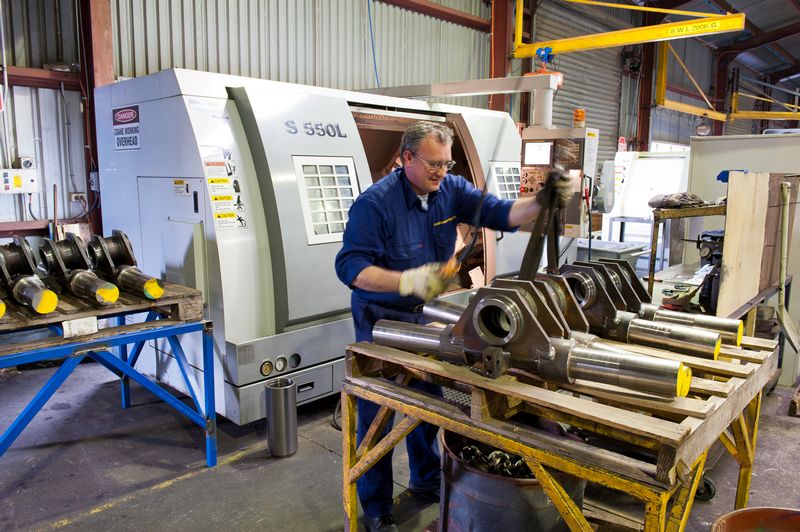 There is a broad selection of cutting tools available for machining these days. Everything from index-able coated carbide inserts, cobalt stub drills & high-speed steel drills, through to ceramic inserts. But even with the best tooling available for the job, how efficient the job will be, comes down to using the right tool for the job.
There is a broad selection of cutting tools available for machining these days. Everything from index-able coated carbide inserts, cobalt stub drills & high-speed steel drills, through to ceramic inserts. But even with the best tooling available for the job, how efficient the job will be, comes down to using the right tool for the job.
As the variety of materials that can be machined is continually increasing, it is more important than ever that correct tooling is selected. Companies like SECO, Kennametal and ISCAR, are manufacturing carbide cutting inserts for ISO standard cutting tools that cover a range of materials from nylon, aluminium, stainless steel and hardened steels. By changing the grade of carbide, cutting edge angles and their proprietary coatings, they can quickly multiply the capabilities of our tooling. From a machine shop perspective, this offers a very economical solution to the problem of having a range of tooling extensive enough to cover all the different material options we offer our customers. By having one cutting tool holder, but a dozen inserts types for different applications, helps us to keep costs down and ultimately provides savings for our customers.
Ensuring your machinists are selecting the right tooling is equally as important, and can be achieved a few different ways. A lot of workshops will have a specialist storeman maintaining their tool room and assigning the tooling to be used to the tradesman. The tooling list is usually pre-determined by management. This method has some benefits such as reducing the time taken to get a job up and running on a machine, as the tradesman is not deciding on tooling. Another benefit is having tighter control over tooling usage that leads to minimising waste. However, employing a full time tooling storeman, will add to company’s overhead costs, it can also lead to a culture where the machinists are no longer giving consideration to the tooling they are using or its effectiveness.
We prefer to use a combination of education and experience from our tradesmen to enable them to make their decisions on tooling selection. Working with SECO, we hold bi-annual training classes to keep the tradesmen up to date with the latest technology and research into appropriate cutting techniques and available tooling. We find the benefits of this method far outweigh those of any other. As a result, we have tradesmen that are more engaged with the work they are performing, have a better understanding of the tooling they use and its capabilities, as well as an insight into problem solving when an out of the ordinary job comes along.
To achieve this, we need to maintain a high level of quality across the entire range of tooling we use. This is done by procuring only top quality tooling parts from suppliers like SECO, Kennametal and ISCAR. But also, ensuring our tradesmen are maintaining and repairing the tooling to keep it in top-quality working order.
So far, this discussion has related to the use of cutting tools in machining operations for different materials. But we do more than just machine these materials, so it is equally as important that we use the right tools when welding and fabricating them as well.
We use the same approach with welding and fabrication as machining, and that is to educate and use the experience of our tradesmen. Our highly skilled tradesmen can determine the right welding wire for a stainless steel frame, the correct pre-heating procedure before welding EN-26 High Tensile Steel, or the proper brake press dies to bend mild steel panels. This is because we give our staff the education required to be able to make these decisions. We find this approach the most helpful, with the added benefit of our tradespeople continually upgrading their skills, and being actively engaged in the task at hand.
Efficiency in welding, fabrication, design and machining is heavily dependant on the using the right tool for the application. As we offer a wide range of materials for our manufactured components, it is especially vital that we are using the appropriate tools with up to date training and best practice. Without these considerations, we would not be able to offer our clients the sustainable competitive advantage that they have come to expect.